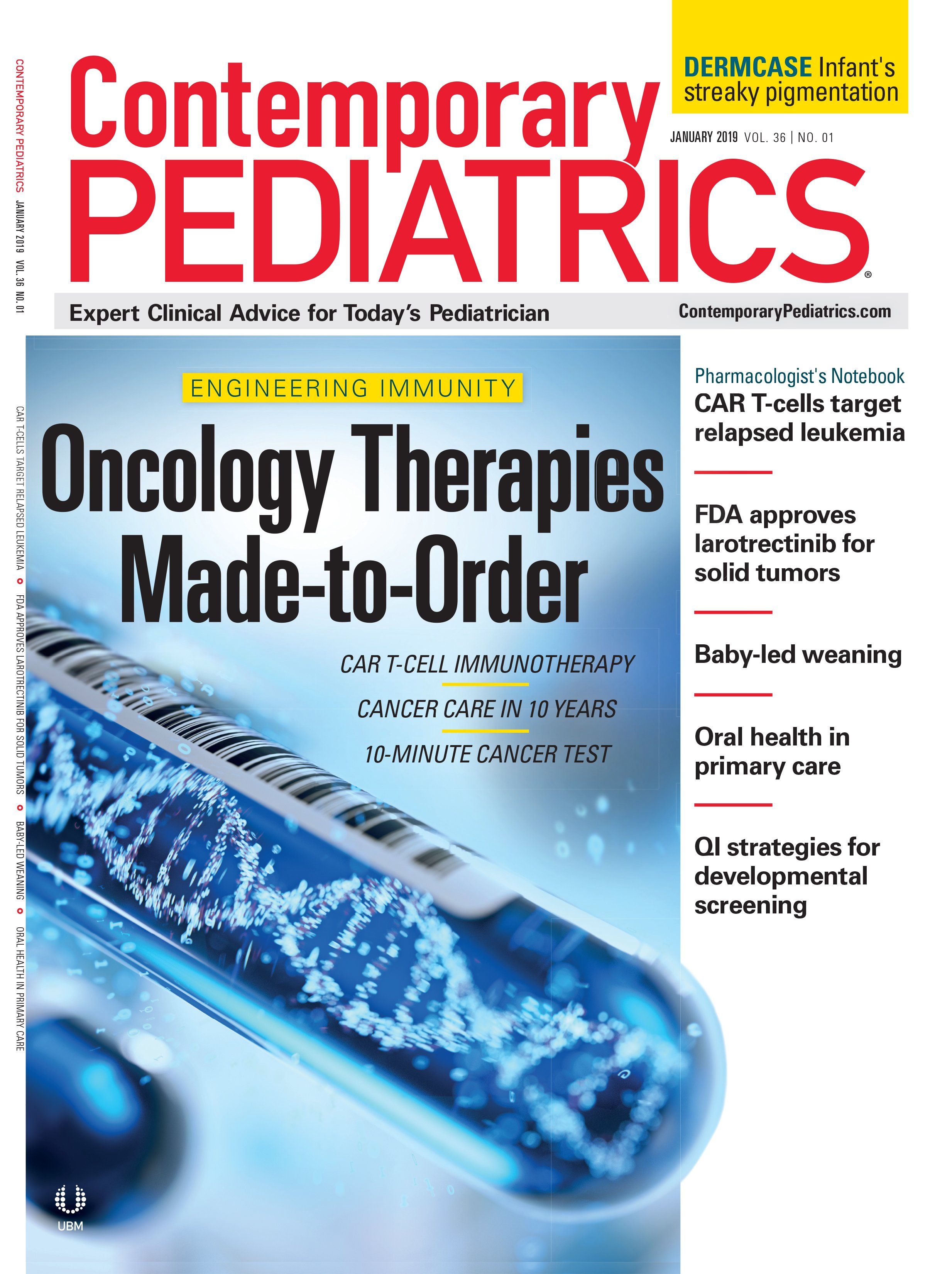10-minute cancer test-a no-go for pediatrics?
Australian researchers have developed a quick cancer test that can identify tumor markers in blood, but it may remain an adults-only test.
Donald Small, MD, PhD

Australian researchers have developed what is being called the “10-minute” cancer test with the hope that it could be used for early screening. Whether the test truly can be used for early detection-or used at all in pediatric populations-remains to be seen.
Laura Garcia Carrascosa, PhD, of the University of Queensland, Brisbane, Australia, led the study and says the test is based on identifying genetic changes that occur in cancer.1
“The heart of this discovery is that we observed that during cancer, DNA experiences a massive change in its epigenetic patterns [that] impact many physical and chemical properties of DNA. For example, we observed that the cancerous DNA forms unique nanostructures in solution that are significantly different compared to the normal DNA,” Garcia Carrascosa says. “It also impacts the way DNA interacts with metal surfaces, like gold. We have exploited this later property to design a cancer detection test, using simple gold electrodes or gold nanoparticles.”
The research is still in the early phase, outlined in a study published in Nature Communications, Garcia Carrascosa notes.
“The aim of the paper was to share the discovery of these unusual properties of the DNA that are connected with cancer, and highlight that, because these properties can be measured in a very simple and fast manner, there is the potential to convert it into a new faster way to cancer detection,” she says, “but more research is needed now to fully evaluate the application of this discovery in the clinical practice.”
Implications for future testing
The hope is to move the research ahead to clinical trials with larger sample sizes, Garcia Carrascosa says, expanding the study into additional cancer types and disease stages to validate the team’s findings.
“If successful, the potential use of the test could be to facilitate a fast and simple preliminary screening of cancer in patients, but we still don’t know how early the cancer could be detected, or if this test could be used in combination with other tests to obtain more precise information about the tumor type and stage,” Garcia Carrascosa says. “Without that information, it’s still difficult to have a clear vision of the potential use of this discovery.”
The test is based on the discovery of cancerous DNA nanostructures and their ability to stick to plain gold surfaces-moreso than normal DNA. The research team tested their theory on 200 tissue and blood samples and identified cancerous cells with 90% accuracy. Initial research focused on breast, prostate, bowel, and lymphoma cancers, and human trials have not yet been attempted.
“This fundamental discovery directed us to develop a quick and easy test to identify the cancerous DNA from any tissue types. The assay, which we termed as ‘methylscape,’ requires a tiny amount of purified genomic DNA [that] is adsorbed for a few minutes onto an electrode surface to measure the extend of the DNA binding to the gold surface,” she explains. “We have also developed a nanoparticle-based detection method, which allows naked-eye detection by mixing this purified DNA with a few drops of gold nanoparticle solution. By simply observing the color change, it is possible to identify the cancerous DNA by naked eye within few minutes.”
Applicability to pediatric cancers?
Donald Small, MD, PhD, director of the Division of Pediatric Oncology at Johns Hopkins Sidney Kimmel Cancer Center, Baltimore, Maryland, says that although the research is interesting, he isn’t sure that it will be useful in pediatric patients. The test is based on DNA methylation, and there are different levels of methylation, and higher levels of methylation typically occur in cancers that develop over a lifetime. In pediatric cancers, this change may not be as evident or as easily detected.
“There are pediatric tumors where methylation of the tumors plays an important role, but it’s not so universal across tumor types. A lot of methylation changes that play a role in cancer are accumulating over lifetime,” Small says, noting that many childhood cancers are congenital or genetic in nature rather than developed as a result of changes to the cell over a lifetime, or based on lifestyle factors. “There are global changes in methylation with certain types of tumors, but that’s not the majority of tumors in pediatrics. Many pediatric tumors don’t necessarily have those same changes or have changes involving a limited number of genes.”
Still, the research is interesting, Small says, but he would like to see more investigation into how advanced tumors must be before they are detected by the test.
“They’re able to dilute down to about 1% abnormal DNA and still see it in their test. One of the questions I have with a screening test is I’m not sure how extensive a tumor would have to be to get 1% of DNA circulating in plasma. It may be that it would just show it at the point the tumor is already there,” Small says. “There are lots of DNA circulating in plasma, so it’s not clear to me at this point how frequently you could pick something up at an early stage.”
Small says he believes that the test would more likely be used for cases where cancer was suspected and symptoms are present, rather than as a screening tool in healthy patients. He also doubts, because of the nature of pediatric cancers and the methylation process, that this test would ever be tested for pediatric use.
“All of the data from this are on patients that are [older] than 40 or 50 years, and most of those tumors are occurring in patients that are older than that,” he says. “You would have to prove that the DNA in pediatric tumors would show the same types of differences.”
References:
1. Sina AA, Carrascosa LG, Liang Z, et al. Epigenetically reprogrammed methylation landscape drives the DNA self-assembly and serves as a universal cancer biomarker. Nat Commun. 2018;9(1):4915.
